Mugen Honda Civic Type R to be Showcased Next Month |
- Mugen Honda Civic Type R to be Showcased Next Month
- 2017 Chevrolet Volt Will Offer Adaptive Cruise Control
- 6 Tips for Driving in the Snow and Not Crashing
- 10 Myths About Fuel Economy
- AutoGuide Answers: Our Favorite Test Drives of 2015
- Quiz: Is This a Hyundai or a European Luxury Car?
| Mugen Honda Civic Type R to be Showcased Next Month Posted: Honda will be bringing a wide collection of vehicles to the 2016 Tokyo Auto Salon. The Japanese automaker will once again showcase numerous Mugen and Modulo concepts early next year, highlighted by a Mugen Civic Type R sporting more aggressive styling, wheels and more. It is also no surprise that Mugen will bring out a couple of S660 roadsters to give enthusiasts an idea of the possibilities for its newest model. Other vehicles that will feature Mugen products include the Step WGN Spada minivan and the HR-V crossover. SEE ALSO: Nissan Previews 2016 Tokyo Auto Salon Showcase Joining the Mugen lineup of customized vehicles will be Honda's Modulo concepts that will once again include the S660, another Civic Type R, a Step WGN, Fit, N-One and N-Box. The company will also present the McLaren-Honda MP4-30, NSX Concept-GT and the Concept CB cafe racer that was at the Tokyo Motor Show earlier this year. Now that the new Honda Civic coupe has debuted at the 2015 L.A. Auto Show, U.S. enthusiasts will have to wait patiently to see what Honda will bring for its new Civic Type R that is finally destined for North America. AutoGuide.com recently named the new Honda Civic our 2016 Car of the Year. Discuss this story on our Honda Forum Loading, please wait... |
| 2017 Chevrolet Volt Will Offer Adaptive Cruise Control Posted: A few details have emerged on the 2017 Chevrolet Volt due this spring in all 50 states. As reported in September, a new color from the Disney Tomorrowland feature will be Citron Green Metallic, and more importantly is adaptive cruise control on the Premier trim level. News not available in September is this option will fetch $1,195 in theory, but actually $2,185 in fact. This is because it must be bundled with blind spot warning, rear cross-traffic alert, forward collision warning, lane-keeping, low-speed automatic braking and intelligent high beams, says Cars Direct. MSRP will be the same thanks to a $50 price decrease to compensate for a $50 destination charge increase. Specifically, the base car will be $33,995 with destination, and the Premier is $38,345. The new Volt will meet federal tier 3 emissions rules (not surprisingly) and here's maybe the best option of all: GM will sell it in 39 more states than the 2016 model.Chevy marketing head Steve Majoros also told us in Detroit last January the new car will be advertised more effectively in markets in which it's sold. Get the Flash Player to see this player. Does this mean we'll see ads in all 50 states? Not known. The Volt is being better received by media this time around – for gen one it got good reviews but had lots of hit pieces written against it too. While some negativity has been put out there, it's less, and the new 53-mile all-electric range evolved car offers more than the original 2011 that had 35 miles all-electric range and started at just around $40,000. This story first appeared on HybridCars.com Loading, please wait... |
| 6 Tips for Driving in the Snow and Not Crashing Posted: If you were one of the lucky North Americans who got hit by your first winter storm of the year last night, you probably woke up to terrible driving conditions. It's inevitable that the first storm of the year will be met with terrible drivers who have forgotten how to drive in the winter. Here are some things you can do to ease the pain and stay safe. 1. Proper winter tires are a mustEven the crappiest winter tires are better in cold, snowy conditions than good all-season tires. The difference is in how much grip you'll get. Simply put, winter tires use rubber that's more effective in the cold and have special tread that gives you more grip. ALSO SEE: Winter Tire Buyer's Guide 2. Clear the damn snow off your carIt's dangerous when drivers don't clear the snow and ice from their cars. It reduces a driver's visibility out of the car, and the ice and snow can blow off and pose a risk to other drivers on the road. Take the few extra minutes to clear all the snow and ice off your car before you get going. 3. Smooth driving is safe drivingTry to keep your inputs smooth. Don't be jerky with braking, acceleration and turning. Any sudden movements will increase the possibility of upsetting the car's balance and losing control in slippery conditions. If your car has a snow/winter mode, use it. It will usually start the car in second gear so you won't spin your tires when you try to accelerate from a stop. 4. Never use cruise control in bad conditionsYou should only use cruise control in dry conditions because cruise control is meant to maintain a wheel's speed regardless of the conditions. You need to be in full control in bad driving conditions so you can make faster decisions. Also, if you hydroplane, having cruise control engaged can make the situation much more dangerous. When you hydroplane, you need to take your foot off the gas to reduce momentum, and if cruise control is on, it will have the opposite affect and you'll have to press the brakes to disengage it. Mashing on the brakes will increase the possibility of losing more control (see #3). 5. Don't drive faster than you're comfortableThis seems obvious, but if you're not comfortable driving in the snow, don't do it. If you need to drive slower, move to the right lane so people can pass you. If you feel uncomfortable, the best thing is to just slow down and don't panic. 6. If you're losing control, look where you want to goIf you find yourself losing control, don't mash on the brakes and close your eyes. Take your foot off the gas, look where you want to go, and smoothly steer in that direction. Good luck and stay safe this winter! Loading, please wait... |
| Posted: It's ironic that though we live in a time when information was never more plentiful that misinformation, fallacies and myths persist. No doubt that lead-out sentence could launch a discussion on myriad subjects, but looking at a relatively benign one – vehicle fuel economy – people still entertain notions that are simply not true. And whether misconceptions are really benign is also in question because despite allegations to the contrary, ignorance is not always bliss. In the case of cars, the automobile has been called the second-most expensive purchase many will make, and marketers also have something to gain or lose depending on what you may think about saving money on fuel. ALSO SEE: Why is My Gas Mileage so Bad? For instance: is it best to pick a dinky little econobox to save the most gas? Should you use premium fuel when regular is called for? Should you dump in fuel additives to increase economy, or is that just snake oil? How long should you let a car warm up, or should you do it at all? Should you replace an aging car on the assumption it can't get as good of mpg as it did when new? Following is a list derived from U.S. EPA data that answers these questions and others. A couple of the list points merely clarify the EPA's role, a couple are just general good info to know, and several hope to help you make better financial decisions – be they from small retailers up to the kind of vehicle you choose and how soon you should choose it. 1. Myth: Letting a vehicle warm up is best for gas mileageThis holdover from the good old days persists, but modern cars are designed to drive within a few seconds of being started. Letting them sit and warm up may be convenient – like in the winter to defrost and warm the interior – but this does not save gas. A car gets 0 mpg as long as it is sitting. It is true an engine must reach an optimal operating temperature for best fuel economy, but manufacturers often recommend gently taking off, and letting the engine warm up as it's carrying you down the road. It will warm faster if you do this while avoiding heavy loads until the engine temperature comes up. 2. Myth: A vehicle's fuel economy decreases with age
If your car is 4 or 7 or even 10 years old, is it starting to become less efficient? Should you therefore think about replacing it? Well, you may want to just to get a more-efficient newer car, but as for whether it has dropped from original spec, assuming it's maintained, it should be OK. "Vehicles that are 10 or even 15 years old will experience little decrease in fuel economy if properly maintained," says the EPA. 3. Myth: The smaller the car, the better the fuel economyThis also used to be true before the advent of newer technologies, and the idea hangs on. The most efficient little non-hybrid car sold is the 40 mpg Mitsubishi Mirage. A Toyota Prius c hybrid actually is a chart topper at 50 mpg, but many bigger and more powerful cars are also competitively efficient. ALSO SEE: Top 10 Most Fuel Efficient Hatchbacks Under $25K Fuel saving technologies besides hybridization, including direct injection, turbocharging, low rolling resistant tires, and even – despite the VW scandal – diesel engines. About half of the 2016 model year cars on the EPA's top 10 list are midsized or large cars or wagons, as a matter of fact. Most are hybrids. Not far behind the Prius c and well ahead of the Mitsu is the 2016 Chevy Malibu Hybrid projected to get 47 mpg. It is a large-ish midsized sedan – much more roomy, comfortable and safe than a subcompact conventional econobox. 4. Myth: The federal government tests fuel economy for all vehiclesActually most passenger cars and light-duty trucks are subject to testing, but federal law rules out testing for vehicles over 8,500 pounds. This means no official fuel economy rating is required for trucks that can do duty for passengers like the Ford F250/350, Chevrolet/GMC 2500/3500, and Dodge 2500/3500 vehicles. These exceed this weight limit and are not tested. 5. Myth: EPA window stickers are a form of guaranty on fuel economy
After hearing "your mileage may vary" enough times, hopefully most people do not think the fuel economy certification is a federal vouching for the stated number. In case you did not make this connection, the EPA writes its own qualification on the subject. "The primary purpose of EPA fuel economy estimates is to provide consumers with a uniform, unbiased way of comparing the relative efficiency of vehicles," says the federal government. "Even though the EPA's test procedures are designed to reflect real-world driving conditions, no single test can accurately model all driving styles and environments." There are too many variables to account for including how people drive and even the type of gas put in the car. Ethanol at a 10 percent mix with regular gas can decrease fuel economy by around 3 percent, says the EPA. 6. Myth: Manual transmissions get better fuel economy than automaticsDo you hear that? That's the imaginary loud buzzer for Wrong Answer! It is no longer a given that manuals trump automatics for fuel economy. Advanced automatics may now net the same or better fuel economy than a vehicle of the same type equipped with a manual – though there are exceptions here as well. The type of transmission used in most hybrids and now being used to optimize conventional cars – CVTs (continuously variable transmissions) – also tend to do better. ALSO SEE: 10 Cars That Only Come with a Manual Transmission Drivers however have pushed back, and some enthusiasts have said they can't stand CVTs or simply prefer the feel and control of a manual. Even the new dual-clutch automatics that may be manually shifted have experienced vocal detractors now that these have been on the market several years. And, a well-operated manual may still yield great results but the watchword is how well it is operated. Meanwhile automakers have largely moved away from offering manual stick shifters in types of cars that used to have the option. 7. Myth: It takes more fuel to start a car than allowing it to idleThe advent of stop-start technology ought to be proof enough this is a myth. In case you did not get the memo however, idling may use a quart to a half-gallon of fuel per hour at a cost of 1-2 cents per minute. One should thus turn off the engine when sitting still, except when in traffic or waiting in line. New engines start very well and efficiently, especially when warmed. 8. Myth: Premium gas yields better economy than regular"You will probably experience no benefit from using premium fuel over regular," says the EPA to anyone whose engine is not specified to be premium-only, or in the case of engines that don't otherwise knock on regular. Otherwise, if it runs on regular, use regular. The extra octane of premium and plus do not improve economy says the EPA, but they will cost more to fill up. ALSO SEE: Do I Really Need Premium Gas? 9. Myth: Replacing the air filter helps fuel economy
This one sounds like common sense, but the fact is modern fuel injected engines compensate for dirty air filters by reducing fuel to the air-fuel mix. Again, this is a holdover truism from the days of carbureted engines, and those are adversely affected by dirty air filters. Otherwise, changing a dirty air filter – while still generally recommended – is not a means to save fuel. It may improve power for a freer breathing engine, as the fuel mix may be increased also. 10. Myth: Fuel additives or bolt-on devices can increase fuel economy
Add-on aftermarket devices you may buy and install, despite claims by their marketers, are not vouched for by Uncle Sam – specifically the Federal Trade Commission. Same goes for stuff you find at the auto parts store, or what not that promises better mpg if you dump it in with your fuel. If you or someone you know has personally tried something and feels differently, subjective impressions may allow for that, and this is a controversial subject and a huge aftermarket business. For its part, the feds urge away from believing these claims. The only modifications the EPA will sign off on are comprehensive full conversions that meet all EPA certification standards. This story originally appeared on HybridCars.com Loading, please wait... |
| AutoGuide Answers: Our Favorite Test Drives of 2015 Posted: We've been very lucky to drive a lot of amazing cars this year, and that time has come to pick out the ones that stood out the most this year. It should come as no surprise that the majority of our editors loved the summer-friendly sports cars, but there are a few quirky and curious selections on this list. Check it out our picks below: Mike Schlee, Road Test Editor: 2016 McLaren 650S Spider"I've had a good year. There have been many amazing vehicles that I've had the opportunity to get behind the wheel of this year like the Hellcats, a Corvette Z06 and the sinister Mercedes-AMG GT S. But the car easily etched in my mind as the best of 2015 is the McLaren 650S Spider. Not only did I get to drive one of these bad boys, but I had the awesome opportunity to pilot two of them. It's hard to describe the exact feeling you get sitting in front of 641 hp that's strapped to a car weighing a svelte 3,000 pounds. The thrust, the handling and the noise as the massive turbochargers force feeding air in to the 3.8-liter V8 spool up; it's all surreal, awesome and dumbfounding at the same time. Here's hoping for another date with McLaren in 2016." See Also: 2015 McLaren 650S Spider Review Jodi Lai, Managing Editor: 2016 Volvo XC90"The two best cars I drove this year are on two very different sides of the spectrum. The first is the Ford Mustang Shelby GT350 simply because it is the most Mustang I've ever driven. An American V8 that can rev to more than 8,000 rpm? Yes please. The sound it makes at full throttle is something like the gates of hell opening up and giving you a big, evil hug. And one of the best parts of this car is that it is remarkably easy to drive despite having 529 horsepower and being manual-only. This car really spoke to me on an emotional level. It's just ridiculous fun to drive. The other car I loved driving this year was the Volvo XC90. It's hard to get excited about big, three-row SUVs, but there is so much to love about the XC90. Not only is its supercharged and turbocharged 2.0-liter four-cylinder a great powerplant, but the technology in this car is astounding. It all comes together in an elegant, stylish and modern package that I'd be very happy to own. No corners were cut with this innovative SUV and it is a joy to drive. This SUV is so different from anything else on the market and sets a new standard for the industry." See Also: 2016 Volvo XC90 Review Craig Cole, Associate Editor: 2016 Ford Mustang Shelby GT350"What is the best car I've driven this year? That's like asking how much a mountain weighs; there are so many variables to consider. If I were after an obscenely luxurious ride, the Mercedes-Maybach S600 would win, hands down. However, if I were after a large, sporty sedan, the Chevy SS with a manual gearbox would be my top choice. Finally, if an orgasmic exhaust note is all that matters, then the Aston Martin Vantage V12 S Roadster would have my vote. But, of everything I've been fortunate enough to sample this year, the one car that probably left the biggest impression on me is the Shelby GT350 Mustang. Its 5.2-liter flat-plane V8 shrieks like something from Maranello, not Dearborn. Winding it out is a religious experience as the powerplant's crescendo is 8,250 rpm. Indeed, this engine wouldn't feel out of place in an Italian exotic; the fact that it's available for around 50 grand makes it exceptional." See Also: Ford Mustang Shelby GT350: 2016 AutoGuide.com Car of the Year Nominee Sami Haj-Assaad, Features Editor: 2015 Volvo S60 Polestar"The best car I drove this year came from one of the coolest European automakers in the world. What's that? You don't think Volvo is cool? Then you haven't checked out the S60 Polestar that I drove in early 2015. Everything about this car was awesome, like the eye-searing blue paint finish, the excellently tuned 345-hp engine, the great exhaust note and the amazing interior that was both comfortable and supportive. I loved driving it, even in the cold season. It may not be an awesome exotic or high-powered sports car, but this sport sedan had a little bit of everything, and as one of the few examples available in North America, it was super special to drive." See Also: 2015 Volvo S60 Polestar Review Stephen Elmer, News Editor: Toyota Tundra TRD Pro"Picking my favorite car driving experience from 2015 is tough, but after much deliberation, I've narrowed it down. While piloting the Mercedes AMG GT is a highlight, my favorite drive of the year is almost more about the place than the vehicle. Our TRD Like a Pro challenge took me to the deserts of California, where a Toyota Tundra TRD Pro was my chariot for two days of crashing through the desert. Racing up and down steep rocky climbs and blasting around sandy corners was all part of the fun and the Tundra delivered. Never once did the truck feel like it might not be able to deliver, and we were not exactly nice to it. The 5.7-liter V8 is a monster whose tone is unleashed with the custom TRD exhaust that comes with this package, while it looks great thanks to a bright orange paint job with black accents and a custom grille. Sure, it sucks more gas than Barney Gumble drinks Duff, but this Tundra is strong and robust and ran smooth for two full days of extreme hot weather fun. For powering my desert adventure, the Tundra TRD Pro gets my favorite drive of the year." See Also: TRD Like a Pro Challenge Loading, please wait... |
| Quiz: Is This a Hyundai or a European Luxury Car? Posted: Hyundai has been seriously stepping up its luxury game recently. The Korean automaker has been coming out with luxurious products for a while now, and has even just launched Genesis, a standalone luxury brand to take on rivals BMW and Mercedes. The brand still has a long way to go in terms of catching up to the Europeans in terms of brand recognition and cache, but one thing is certain: Hyundai is no longer synonymous with cheap, crap can economy cars. Take our quiz below to see if you can tell the difference between a Hyundai and a European luxury car and share your score with us! Loading, please wait... |
| You are subscribed to email updates from AutoGuide.com News. To stop receiving these emails, you may unsubscribe now. | Email delivery powered by Google |
| Google Inc., 1600 Amphitheatre Parkway, Mountain View, CA 94043, United States | |


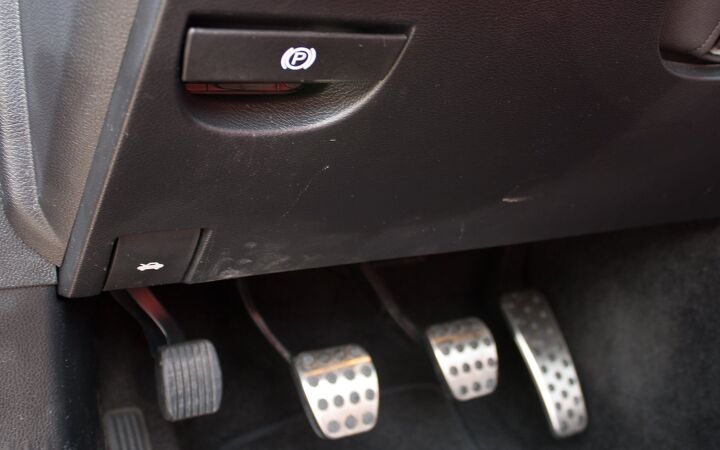
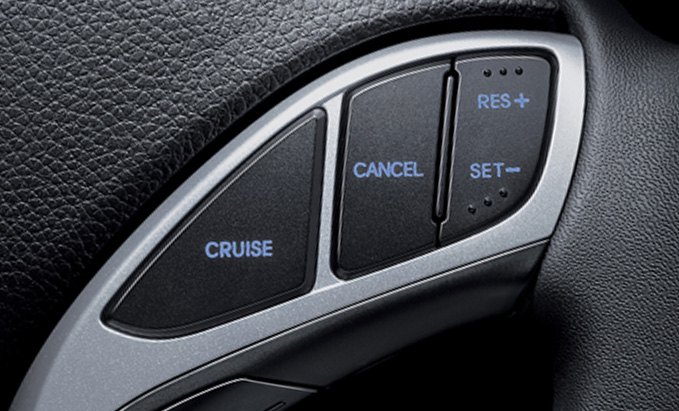


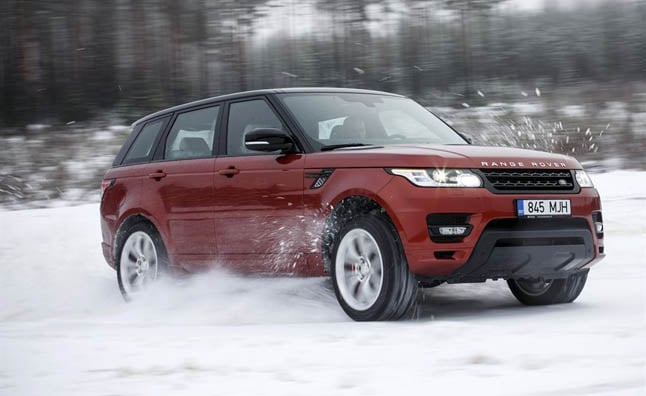

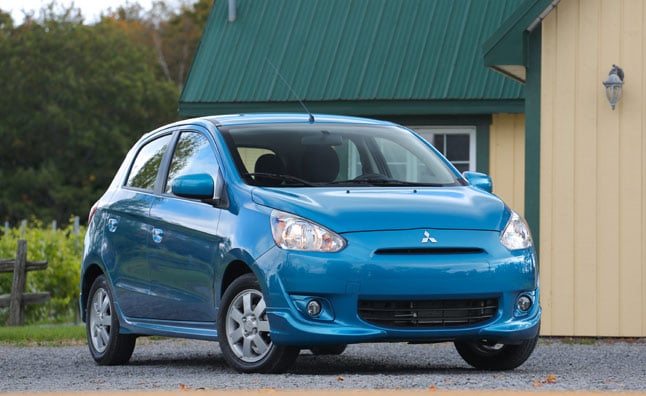



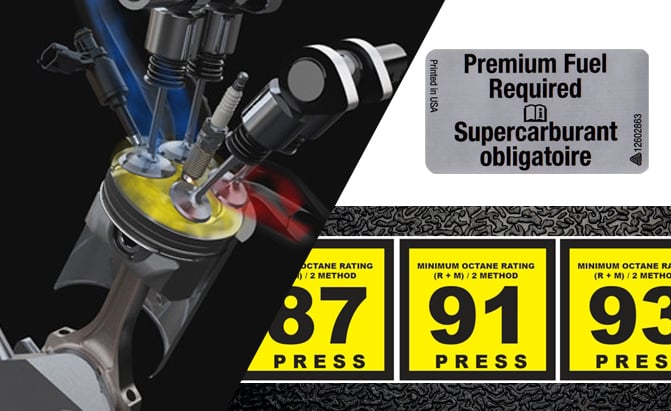







No comments:
Post a Comment